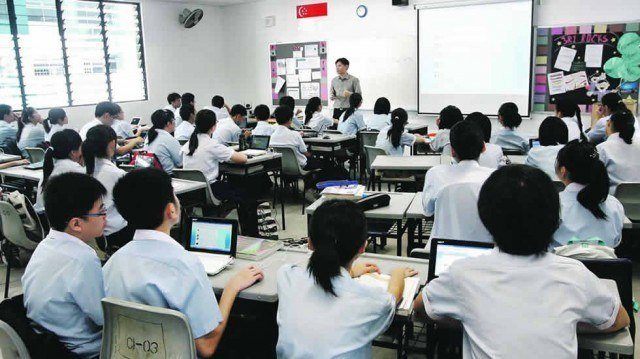How can technology help develop educational tools?
Using technology in education is no longer a myth as educative platforms such as Coursera (a free online platform), e-180 ( a platform for exchange of expertise) and Skillnet (a platform for development of professional competencies) demonstrate.

Studies have been conducted at universities to evaluate the impact of using new information technology and communication (ITC) in education. Center for the study of learning and performance (CSLP) in Concordia has done such a research and has developed a learning toolkit. This toolkit consists of a reading software called ABRACADABRA, a digital library called READS, an evaluation software for various levels called ePearl as well as a software for developing research and analytics skills of elementary school children and high school students ISIS-21. Moreover, the center is currently working on a project to evaluate the long term evolution and effectiveness of these toolkits in certain countries.
ADABRA helps to improve reading and writing skills
ABRA software offers an interactive multimedia environment to learn reading and writing with the help of various didactic materials. The content of the activities in ABRA has been developed from systematic analysis of the data about what works in reading and spelling. Moreover, the activities that are integrated in ABRA provide teachers with methodologies to help them transition smoothly from a method solely based on continuous reciting to a method centered on understanding oral and written English.
Studies have been conducted in North Australia and in Kenya in order to analyse the relevance of ABRA usage. Both of these zones are facing the same issues in their educational system as other developing countries; high rate of teachers and students’ absenteeism, lack of qualified teachers and low number of students.
In Kenya, after 11-13 weeks of intervention in two phases, the results of the experiments indicated that the students of the classes in which the software was used demonstrated improvement of in English, mathematics and human sciences.
In fact, other studies showed that efficient use of ABRA led to significant improvement of reading, comprehension and writing skills in comparison with the old learning method in which students were passive.
Social initiatives
At the time of the conception of the software, the initial interest was to find a balance between the digital environment and a rich literary context so that children will be able to explore their interest and flourish. It was also very important for the developers that the software could be adapted to students with special needs or the ones with academic problems. In fact, the availability of the software at the lowest cost was primordial considering the students’ difficulties at school in certain urban and rural areas where the rate of literacy is very low.
Repeating the slogan, “we are not taking advantage of the children but the children can take advantage of our experience,” the researchers of our center manifest a strong social engagement that proves, one more time, that technology is compatible with social innovation and socio-economic development.
As Ann Wade, professor and director of CSLP mentions, following the success of this multimedia project, the goal is to expand it across French-speaking Africa. Knowing that the issues faced will be the same, it will be interesting to see its impact in pilot schools and to conduct a comparative research.
The new technological tools will perhaps transform the future of education. This change will not be possible without the involvement of the educators, the parents as well as the society all together in order to train the future leaders of future Africa.
Translation by Bahar Hoshyar
Source: ABRACADADRA, Center for the Study of Learning and Performance. Mars 2015.
http://grover.concordia.ca/abracadabra/promo/en/index.php




